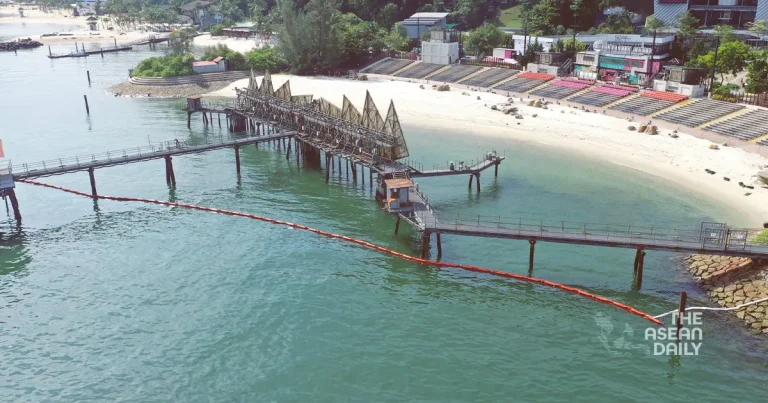24-6-2024 (SINGAPORE) In the wake of a significant oil spill that occurred on June 14th off the coast of Sentosa Island, authorities have been engaged in extensive cleanup operations to mitigate the environmental impact and restore the affected beaches. According to a recent Facebook post by Sentosa, over 140,000 kilograms of oil-soaked sand has been removed from the three affected beaches on the island since June 15th.
While the shoreline of Siloso Beach has been “largely cleaned,” Sentosa acknowledged that there is still work to be done. The cleanup efforts have now expanded to clearing oil from rock bunds and breakwaters, a challenging and time-consuming task due to the uneven surfaces and the oil seeping into boulder crevices.
“We are working with experts using specialised cleaning methods to thoroughly flush out the oil and clear it from the lagoon,” Sentosa shared, emphasizing the complexity of the process.
Despite the ongoing cleanup operations, Sentosa assured that its beachfront dining spots and attractions remain open, and visitors can still enjoy access to the island’s beaches.
The oil spill occurred on June 14th due to an allision between a Netherlands-flagged dredger and a stationary Singapore-flagged bunker tanker. In a Facebook update on June 20th, Minister for Sustainability and the Environment Grace Fu acknowledged that more time is needed for the cleanup process.
Fu highlighted the complexities involved in cleaning oil off the rock bunds and breakwaters, which require specialised cleaning methods due to their inaccessibility and uneven surfaces. Additionally, oil that has seeped into boulder crevices must be thoroughly flushed out, and any remaining oil within the lagoon must be removed.
Before the beaches can be fully reopened, the government aims to ensure that water quality levels are within safe limits. Fortunately, Singapore’s water supply and sea-based fish farms have remained unaffected by the oil spill.




